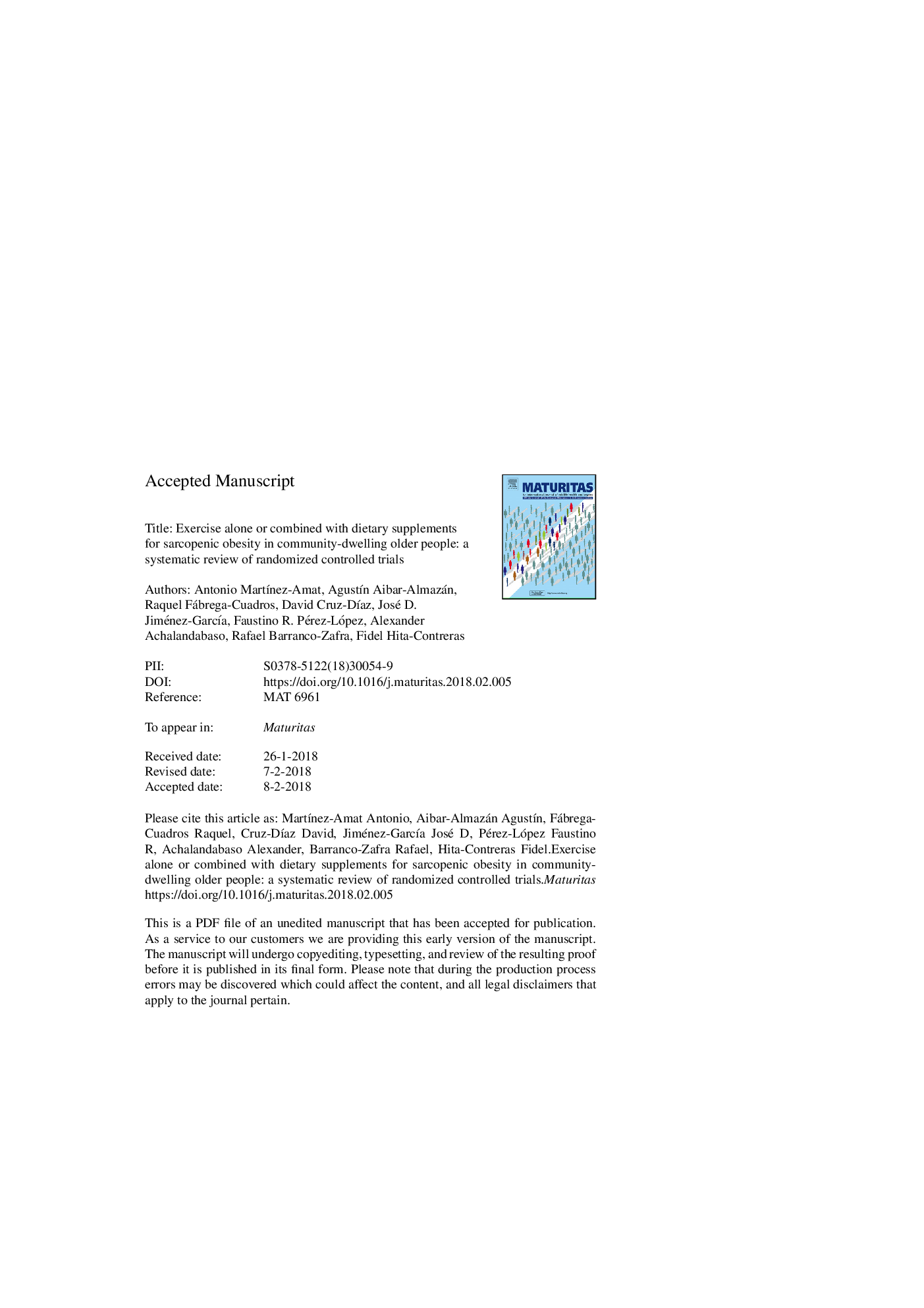| Article ID | Journal | Published Year | Pages | File Type |
|---|---|---|---|---|
| 8283868 | Maturitas | 2018 | 28 Pages |
Abstract
A literature search was performed using the PubMed, SCOPUS, CINAHL and Cochrane Plus databases. The main inclusion criteria were that the papers were English-language reports of RCTs involving healthy community-dwelling adults aged â¥60 years with SO. The initial search identified 2073 publications from the 4 databases and 72 additional records; 42 full-text records were assessed for eligibility and 8 articles were finally included. The search was conducted from December 1, 2017 to January 8, 2018. The types of exercises were resistance and aerobic training, either alone or combined, and whole-body electromyostimulation. Protein supplementation was included in three studies. The diversity of the methodologies employed and of the results observed does not allow us to reach a clear conclusion. Whereas five of the studies reported improvements in obesity, results were contradictory concerning muscle mass. Increases in muscle strength appeared especially with resistance training and do not seem to be linked to protein supplementation. On the other hand, improvements in physical function were reported in programs combining aerobic and resistance training with nutritional supplementation. We believe that it is of the utmost importance that a certain degree of homogeneity is kept concerning the methods and criteria used in the diagnosis of SO, so that the effects of specific physical exercise programs, whether alone or combined with nutritional supplements, can be assessed with precision.
Keywords
Related Topics
Life Sciences
Biochemistry, Genetics and Molecular Biology
Ageing
Authors
Antonio MartÃnez-Amat, AgustÃn Aibar-Almazán, Raquel Fábrega-Cuadros, David Cruz-DÃaz, José D. Jiménez-GarcÃa, Faustino R. Pérez-López, Alexander Achalandabaso, Rafael Barranco-Zafra, Fidel Hita-Contreras,
